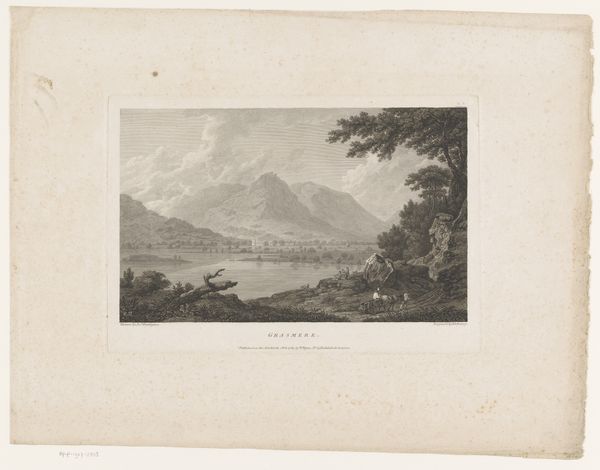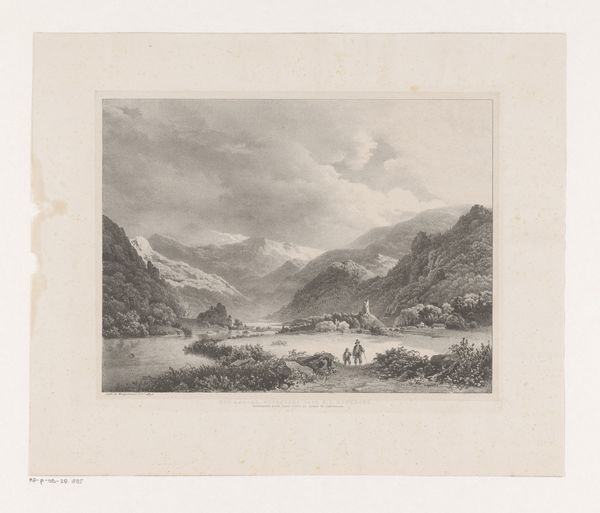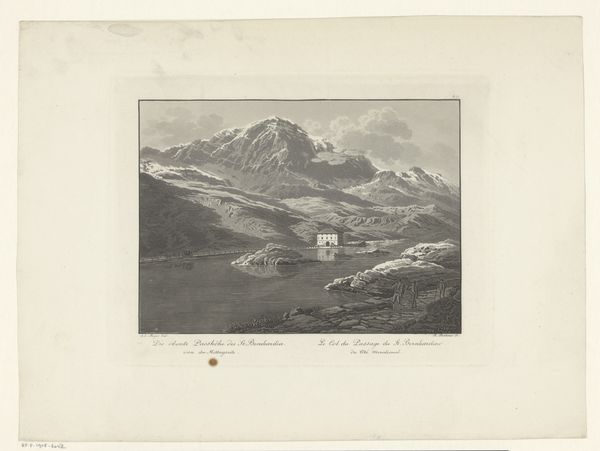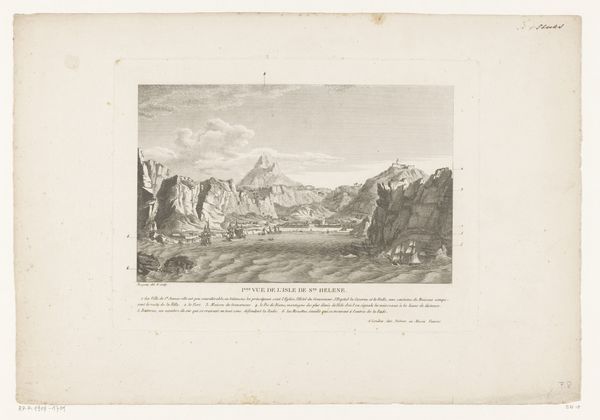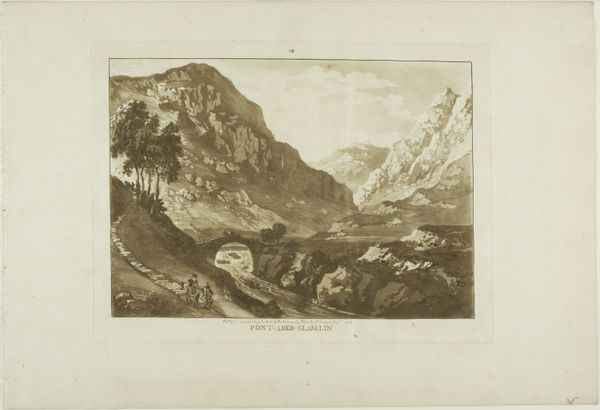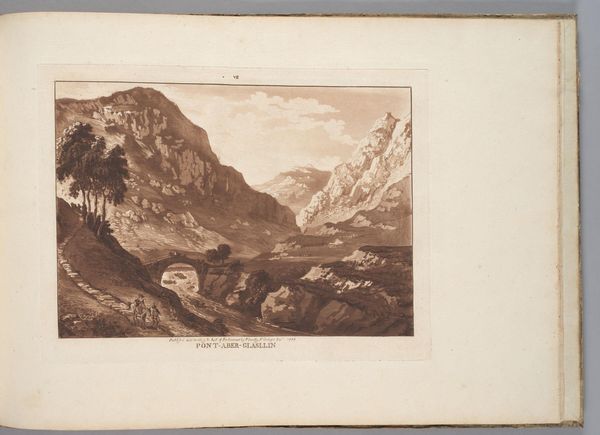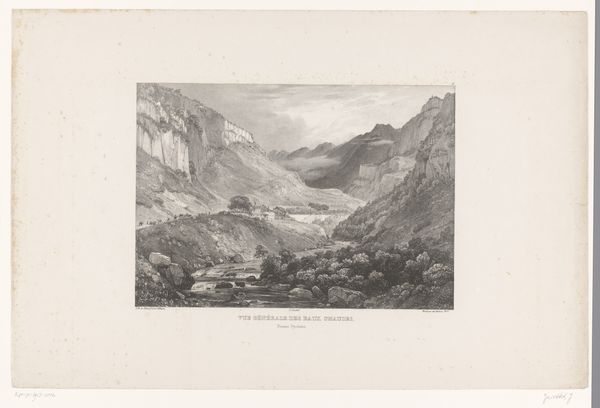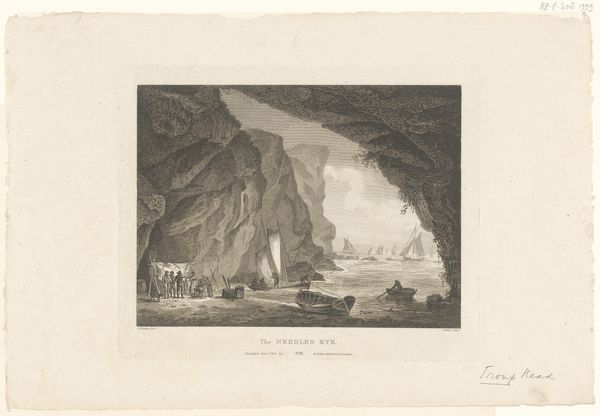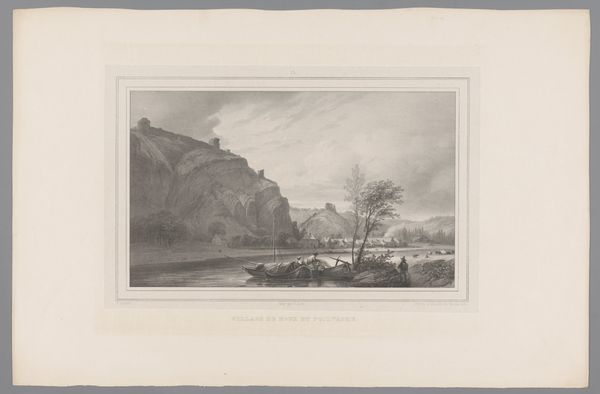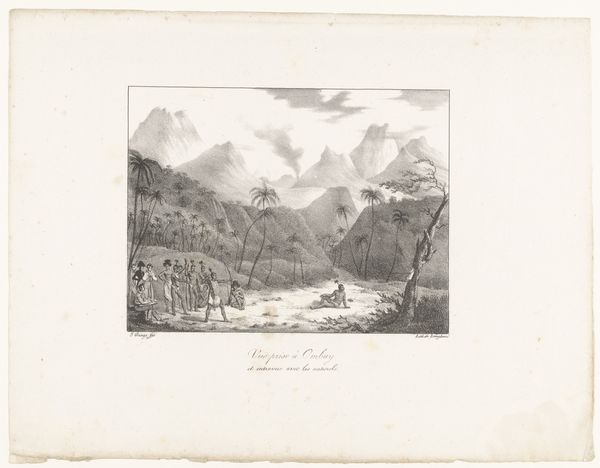
Dimensions: height 251 mm, width 365 mm
Copyright: Rijks Museum: Open Domain
Curator: Let’s take a look at this engraving, “Gezicht op Rydal Water,” or “View of Rydal Water,” dating back to 1785 and attributed to Benjamin Thomas Pouncy. Editor: It's…austere, in a way. The tonal range is narrow, mostly grays, and those rugged rocks in the foreground contrast starkly with the ethereal distance. Almost oppressive, yet also calming. Curator: That tension is so characteristic of Romanticism, which was flourishing at this time. We see it reflected in literature, music… the idealization of nature, but also the awareness of its power and indifference to human concerns. This was an era defined by rapidly shifting social hierarchies. Prints like these became popular as keepsakes for those on leisure excursions, feeding a burgeoning tourism industry that democratized access to "picturesque" scenes, Editor: It's interesting you mention the tourism aspect. This image, and prints like it, were commodities created for consumption, much like the landscape they portray becomes something to consume visually and experience, not just live within. You can really see the production aspect here in the finely-worked textures – you can almost feel the repetitive labour involved in creating the print from an inked plate. Curator: Exactly! And prints played a critical role in disseminating images. Engravings like this allowed a much wider audience to engage with these scenes than ever before. It was a transformation of art's role in society. It reflects how institutions started responding to shifts in social structures and the emergence of public consumption of arts and leisure. Editor: I’m struck by how the rocks are shaped here: the very human desire to find distinct, definable forms where no such form exists in its original source—to take these geological features and find a form, perhaps like building blocks, within something inherently unstructured. And through reproduction, it becomes standardized, doesn't it? The raw material gets packaged into neat, sellable ideas about nature and nationhood. Curator: A good point. Pouncy's Rydal Water offers us insight into the interplay between aesthetic tastes, societal shifts, and the very beginnings of cultural tourism. Editor: Yes, a potent combination when seen in the light of commodity production, especially from the viewpoint of today. A testament to nature observed, filtered, and circulated.
Comments
No comments
Be the first to comment and join the conversation on the ultimate creative platform.
